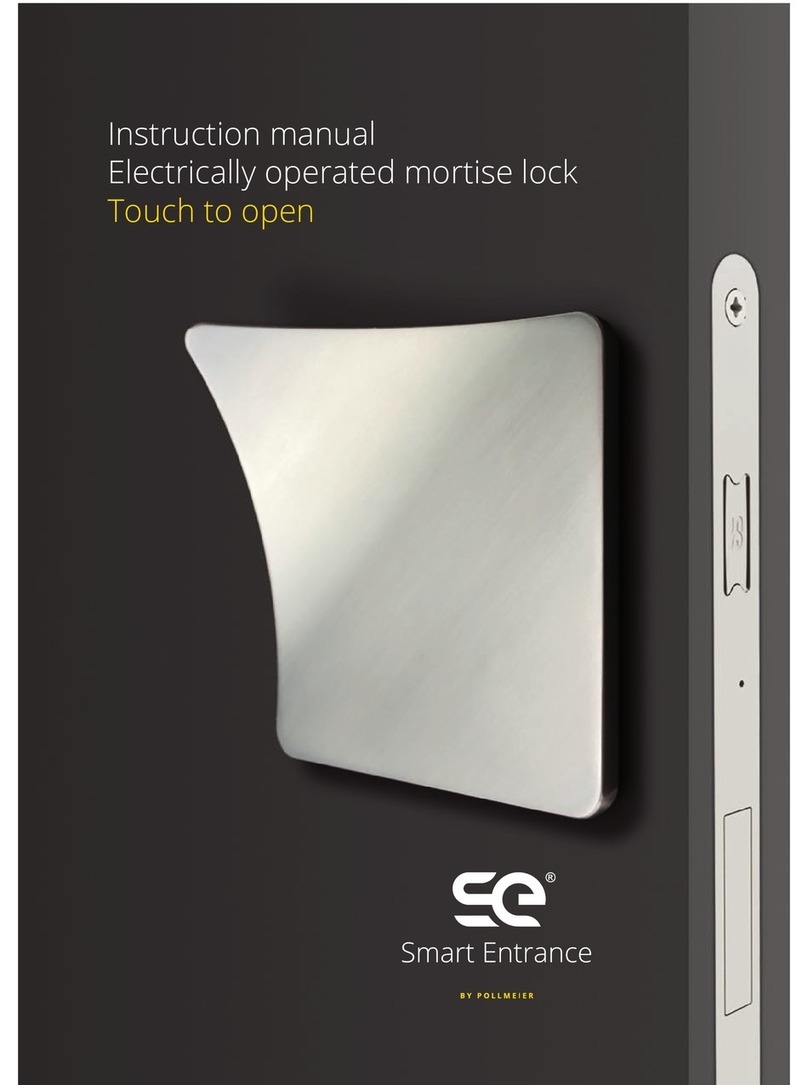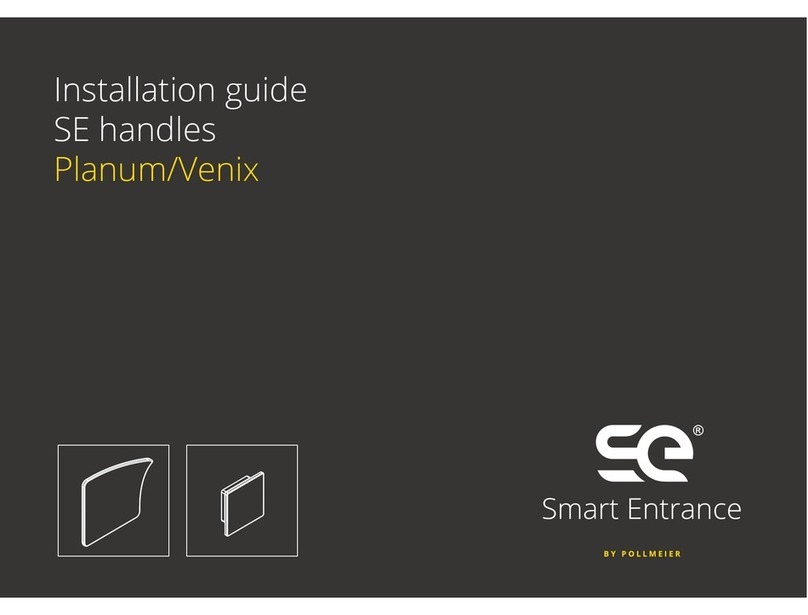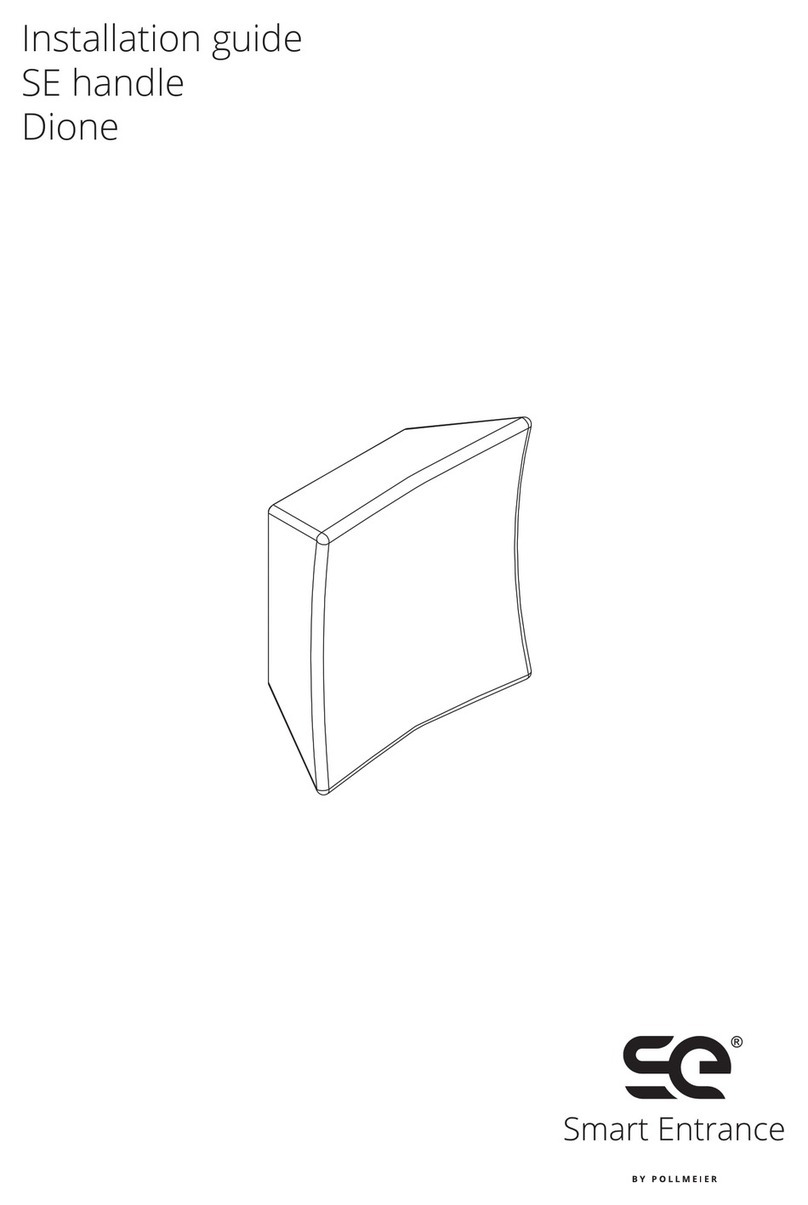6
3 Security
3.1 Intended Use
– The lock is designed for occasional use in private interior rooms by persons who handle
the technology carefully.
– The lock is exclusively designed for installation in single-leaf glass room doors in conjuncti-
on with a wooden or aluminium frame.
– The door weight must not exceed 60 kg.
– Only use design trim panels licensed by Baugruppentechnik Pollmeier GmbH in conjuncti-
on with the electric glass door lock as the function cannot otherwise be guaranteed (see
section 7).
– The glass door lock may only be used with 8mm ESG panels.
– Only use the lock in undamaged condition without defects. Exclusively use the supplied
batteries, or equivalent (type AA 1.5 V Mignon alkaline batteries).
The A-rated emitted sound pressure level is less than or equal to 70 dB(A). There is no risk
from noise.
The maximum effective value of the weighted acceleration to which the entire body is
exposed is less than 0.5 m/s². The overall vibration value to which the upper body limbs are
exposed is less than 2.5 m/s². Thus, there is no risk due to vibration.
2.3 Function
When the glass door is closed, the latch is pulled out of the lock by the magnetic strike
plate and snaps into place in the strike plate.
When the contact surfaces are actuated, the locking part (latch) on the lock is electrically
retracted. The motor overcomes the magnetic attraction force and pulls the latch out of
the strike plate. The door can be open by pushing or pulling.
OPERATING INSTRUCTIONS
Touch to open electric glass door lock































